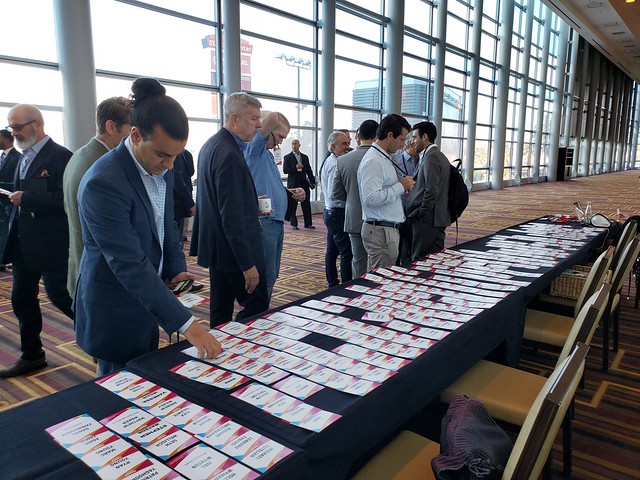Frustrated Developers, Investors Seek Opportunity Zone Guidance
Strategic Realty Holdings CEO and founder Eddie Lorin sums up the frustrations many real estate investors have when they further delve into the nuances of the new federal Opportunity Zone program.

Lorin recalled how, at a recent Opportunity Zones Coalition meeting, a venture capitalist came in, “high-fiving the people in the room and saying, ‘This is the greatest thing [to happen] for distressed properties and distressed areas.’”
“And then he left and said, ‘Oh, my God, we got more problems,’” Lorin told a crowd of more than 350 at Bisnow’s Evolution of LA's Submarkets & The Impact of Opportunity Zones event Tuesday at the JW Marriott in downtown Los Angeles.
The story encapsulated the questions around the Opportunity Zone program, which passed late last year as part of President Donald Trump’s Tax Cut and Jobs Act.
The federal program incentivizes real estate investors and developers to bring new investments and businesses into low-income and underserved neighborhoods in exchange for a hefty tax break.
But for all of the excitement, potential possibilities and savings on capital gains with this new federal program, there are just as many questions, and just as much confusion and frustration, many panelists said.
“We all heard opportunity zones and went, ‘OK, that sounds interesting. More capital and tax breaks that sounds great,’” Sheppard Mullin partner Pam Westhoff said.

But there is a lot of confusion, Mullin said.
“There is so much uncertainty out there,” Lorin said.
Kosmont Cos. CEO Larry Kosmont said there is a need for more guidance from the government.
At Tuesday's event speakers discussed Los Angeles’ hottest submarkets and the opportunity zones program. Panelists discussed some of the growing submarkets such as Hollywood, Boyle Heights, Los Feliz and Burbank.
The hottest topic at the event, though, was opportunity zones, as attendees sought to learn more about the program.
Since its passage in December, investors and developers have been digging into the program to see how they can take advantage of it. California has 879 designated opportunity zone areas.

But the further these investors dig into the program, the more questions are raised:
- California has a 13.3% tax on capital gains. Will California and other states exempt state taxes for opportunity zone investors?
- To realize the tax deferral, the program says the investor would have to sell its qualified opportunity fund. If the opportunity fund has 10 properties, does this mean all 10 properties have to be sold at the same time?
- Can leasing a building in an opportunity zone be considered an investment?
- What happens if you refinance an investment property in an opportunity zone?
- What if I own property in an opportunity zone? Can I sell it to an opportunity fund I own and take advantage of the program?
These are just some of the many questions investors have relating to the program, Lorin said.
“There [are] a lot of people who want to get into this game but probably can’t,” he said, citing the complexities.
The Opportunity Zones Coalition, of which Lorin is a member, is made up of members from 50 or so commercial real estate companies and public agencies nationwide tasked with finding answers to the most pressing questions and navigating through the murkiness of the program, he said.
The group has been actively sending memos to the Department of Treasury and the IRS seeking answers.
“The good news is there’s not much regulation,” said Lorin, who said a lot of people just want to charge in and learn or fail as they go along. “But anybody who is an adviser, fiduciary or trustee, these kinds of people … you’re not going to get people to invest unless there is clarity. So there is the challenge to make sure that [what] this Act is intended for comes into fruition.”
Lorin said for all the good this program can do for these low-income areas and their residents, it could also have serious ramifications without clarity.
“This could lead to regentrification and push out the very people the program is intending to help,” he said.
Check out a slideshow of photos from the event:

